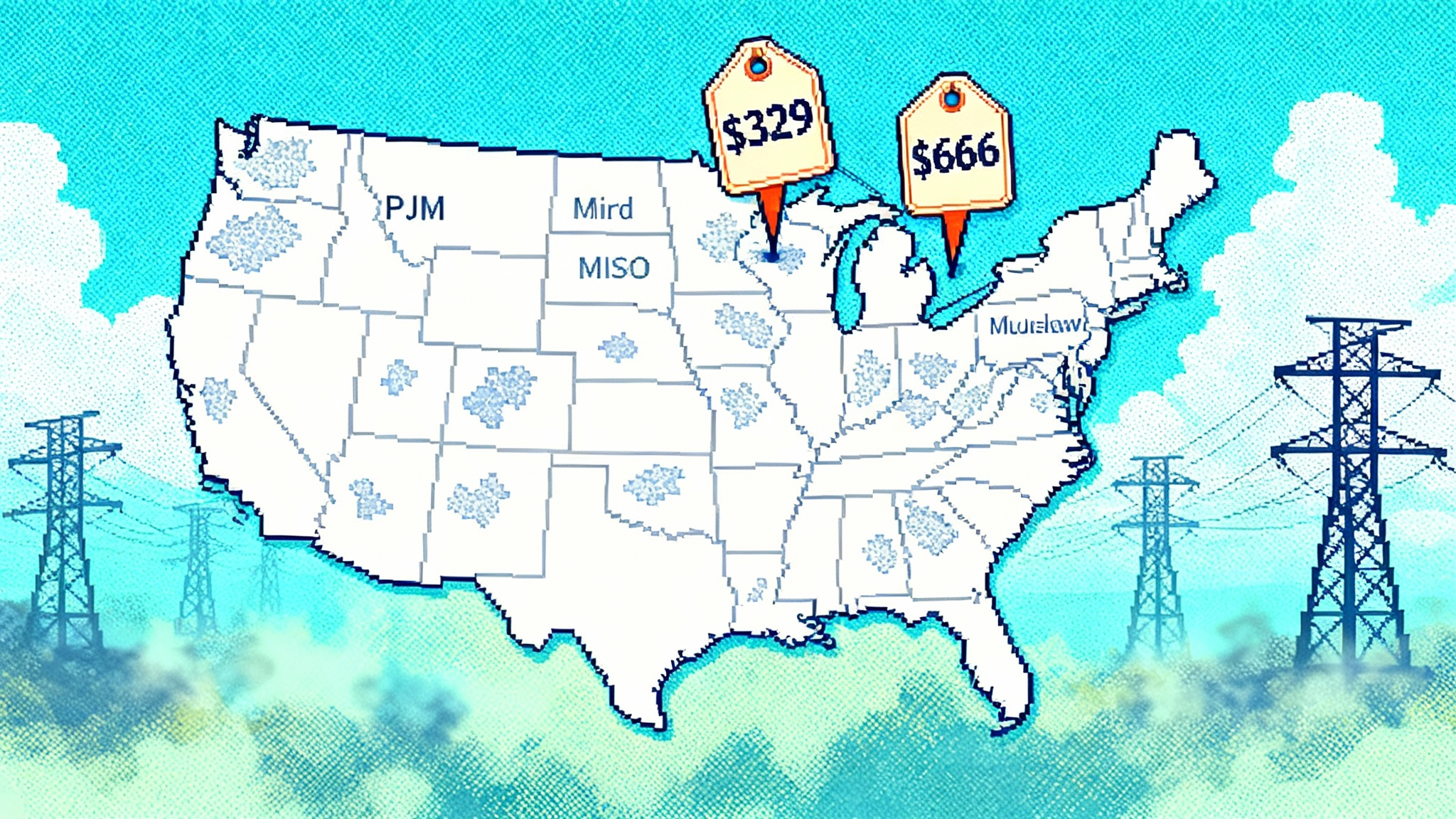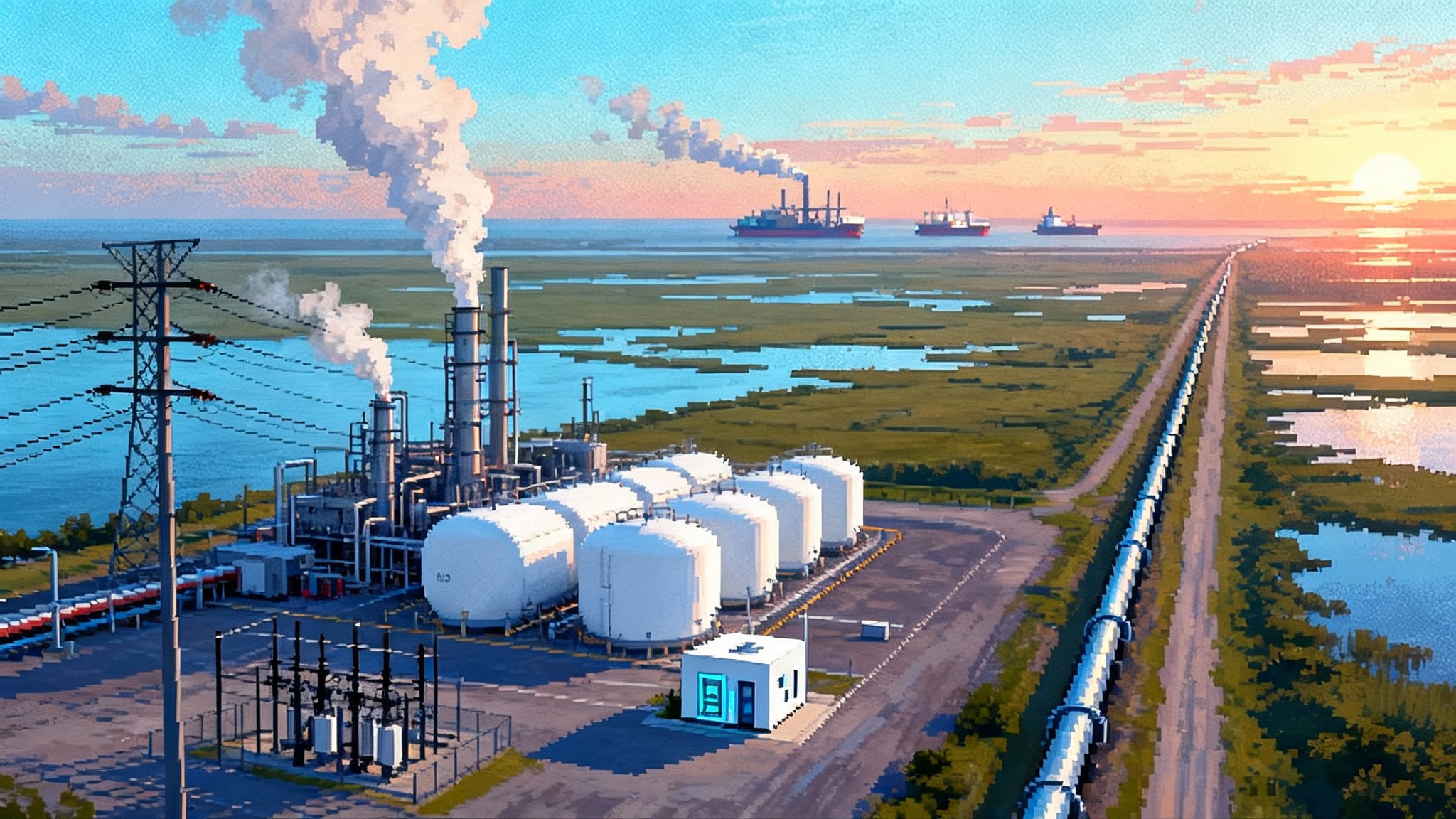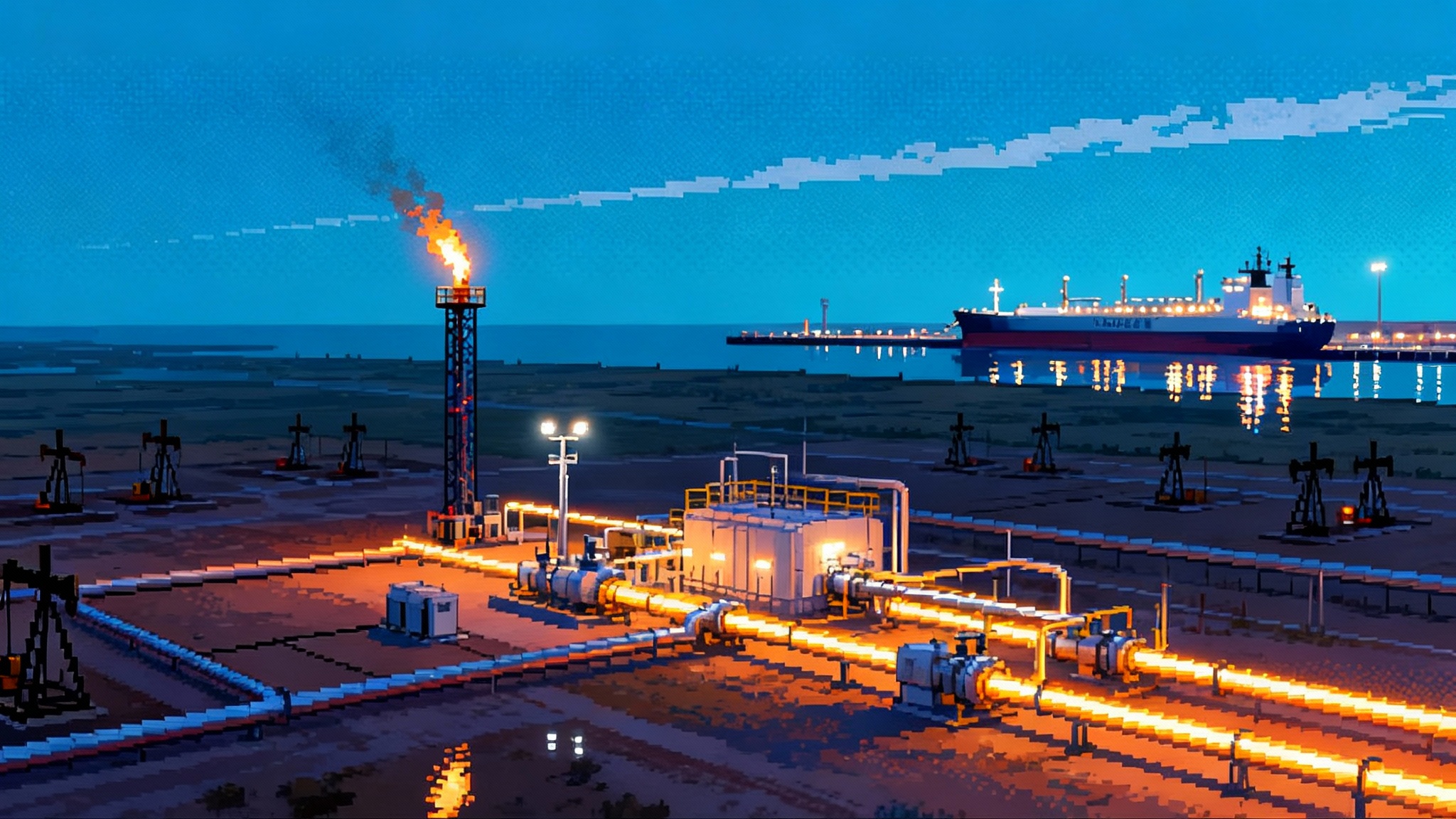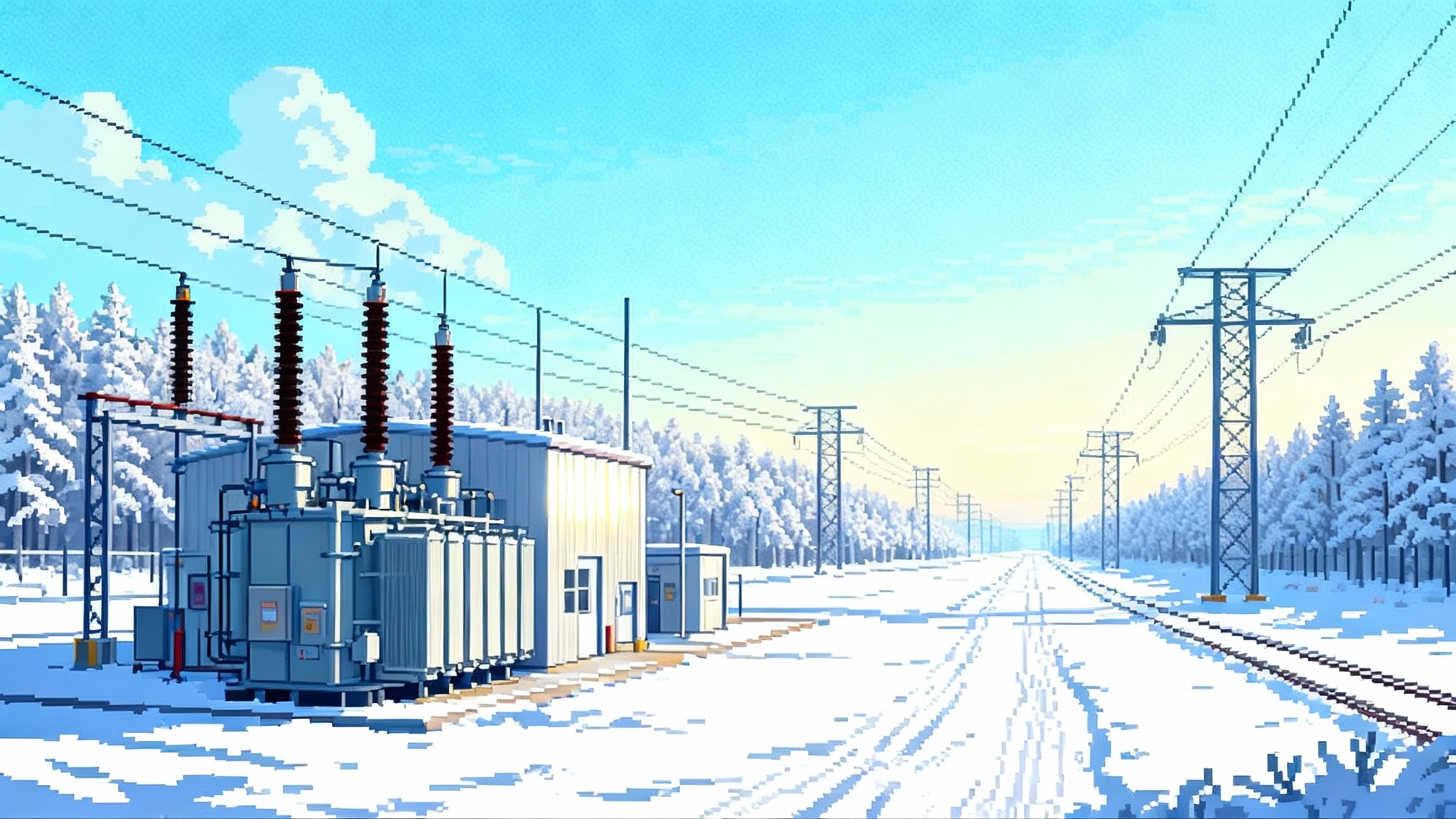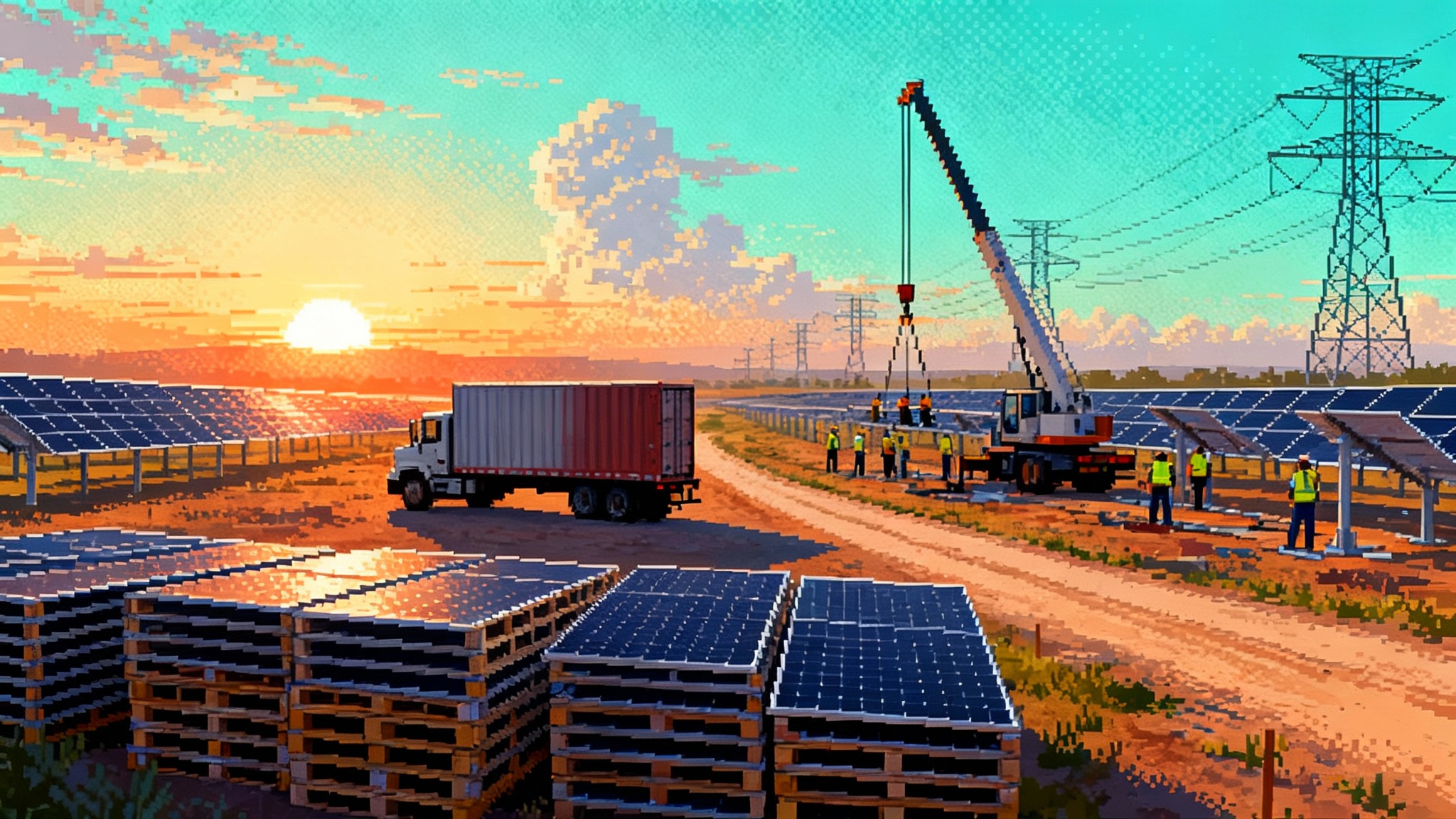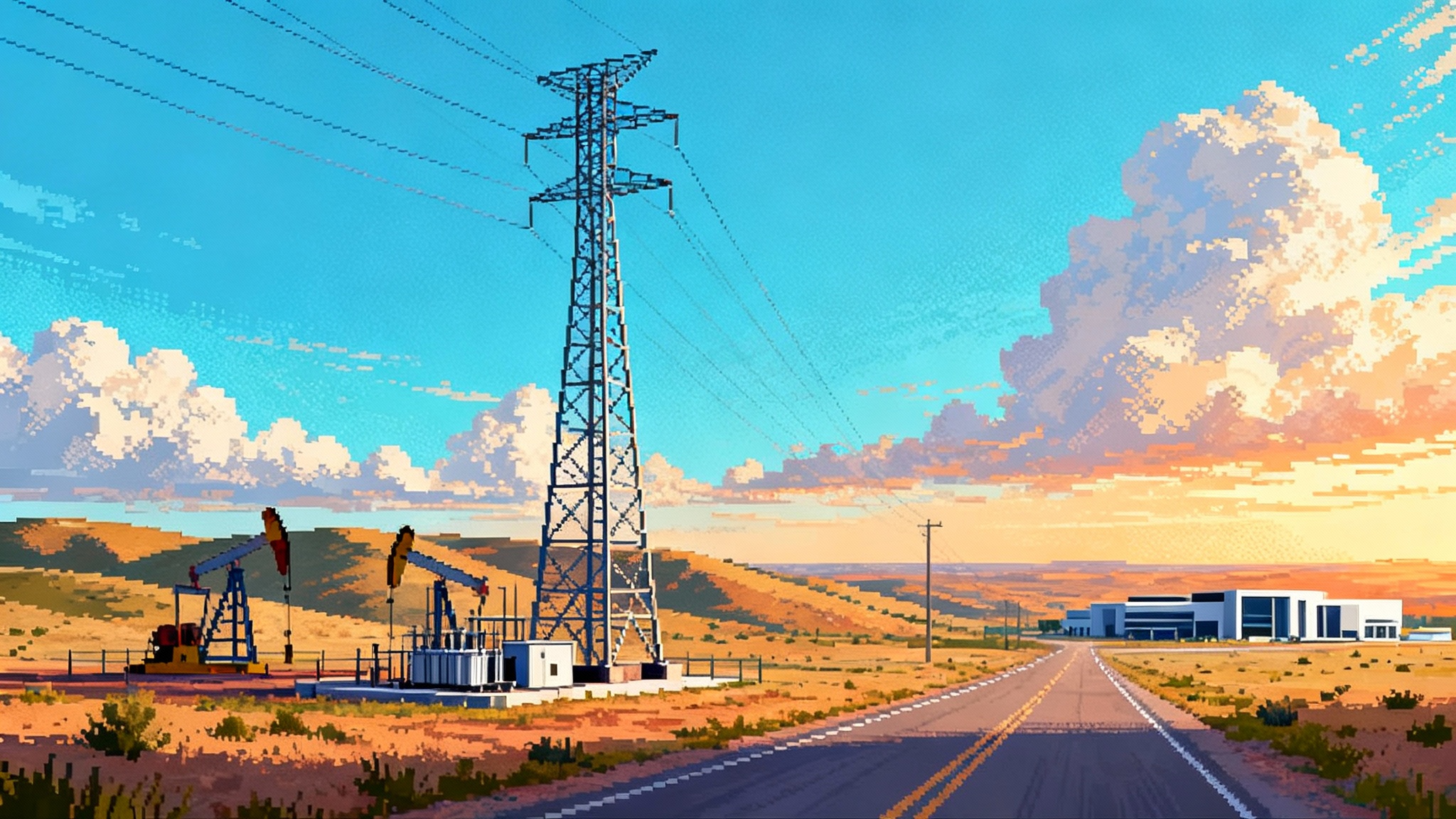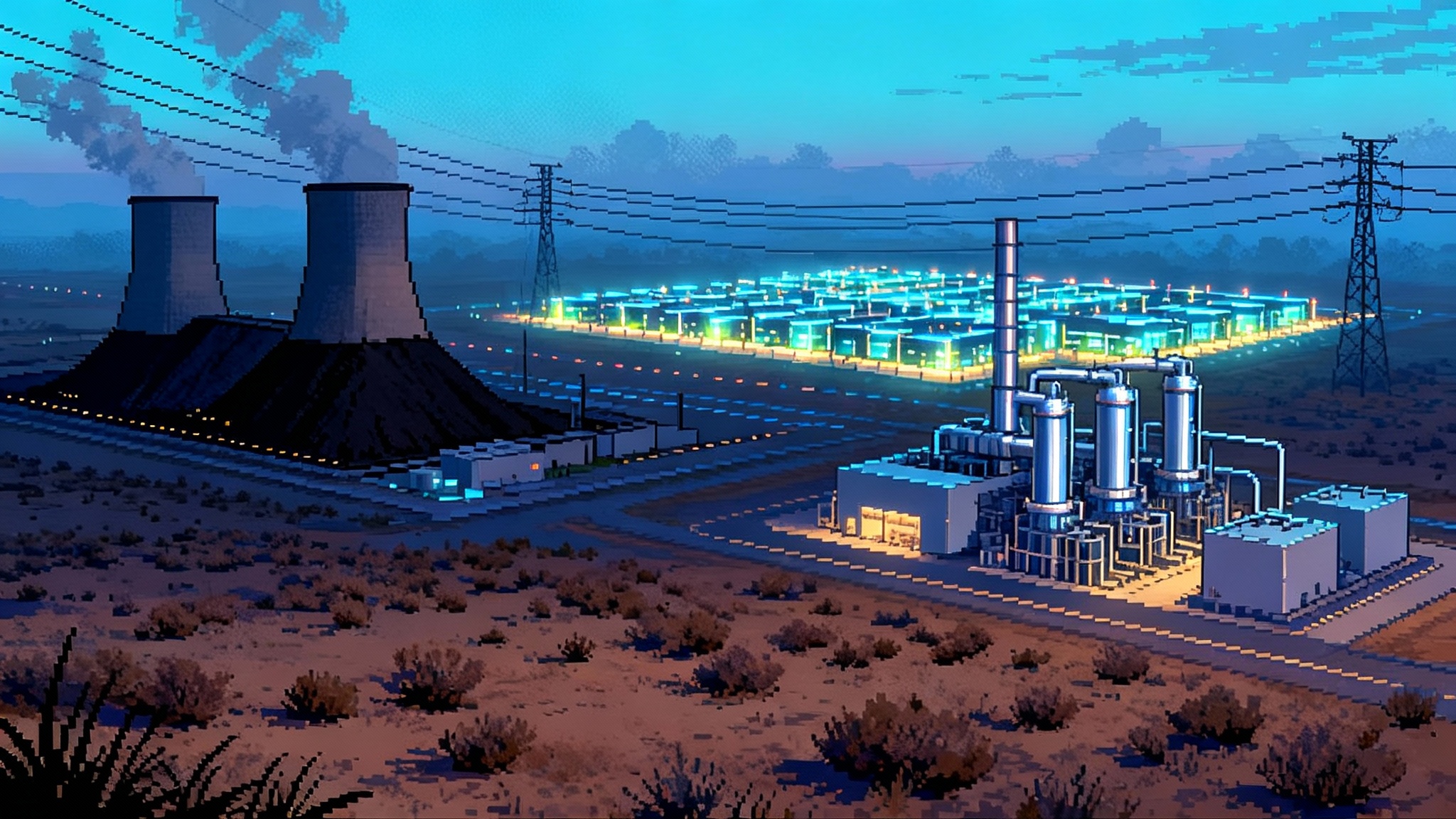America’s Enrichment Comeback: 2025’s nuclear fuel reboot
The United States is finally breaking its uranium bottleneck. In 2025, DOE HALEU allocations, a Centrus extension, new Urenco cascades, and fresh Paducah licensing set the stage for secure fuel by 2030 and a new wave of reactors.

The bottleneck moves: 2025 is the pivot year
In May 2024 the White House signed a law that banned imports of Russian enriched uranium and unlocked billions to rebuild the domestic fuel cycle. That decision instantly turned a long ignored vulnerability into the next great industrial buildout. The ban began phasing in during 2024, with narrow waivers for reliability, and it cemented the mission for 2025: replace the single largest foreign source of enrichment with capacity at home and with trusted allies. Think of this like a highway detour that suddenly sends most traffic onto a two lane road. Unless we add lanes fast, we get a traffic jam. Nuclear fuel has been that jam for a decade. Now the cones are up and crews are finally repaving. DOE’s ban announcement marked the start, but 2025 is where the asphalt is going down.
Why was enrichment the choke point in the first place? After uranium is mined and refined into a powder, it must be converted into a gas and enriched so that the share of the fissile isotope, uranium 235, is high enough to sustain a reactor. Most existing U.S. reactors use fuel enriched to about 4.5 to 5 percent. Many advanced designs need high assay low enriched uranium, or HALEU, between 5 and 20 percent. If you do not have the right sieve and enough of them, the kitchen cannot cook at scale no matter how stocked the pantry is. For years Russia owned a giant share of the world’s sieves. That is now unacceptable policy and unacceptable risk.
For broader context on how federal policy resets shape energy buildouts, see our analysis of hydrogen’s 2025 reset under 45V and how AI load rewrites the grid.
Four 2025 milestones that reset the fuel supply
-
DOE’s first HALEU allocations. In April, the Department of Energy made conditional HALEU allocations to five companies: Westinghouse, Kairos Power, TerraPower, Radiant Industries, and TRISO X. In August, DOE followed with a second tranche for Antares Nuclear, Standard Nuclear, and Abilene Christian University’s Natura team. These allocations use government owned material to jumpstart demonstrations and test fuel lines while commercial supply ramps. It is a bridge, not the highway, but it gets near term projects moving.
-
A one year extension for U.S. HALEU production. In June, DOE extended Centrus Energy’s demonstration contract through June 30, 2026. The Piketon, Ohio cascade is licensed and running at about 900 kilograms of HALEU uranium hexafluoride per year. That is not yet industrial scale, but it is real production in the United States and it buys time to add more cascades and more suppliers.
-
New Urenco cascades online in New Mexico. Urenco USA brought a new centrifuge cascade into production in May and a second in September at its Eunice, New Mexico site. The current expansion campaign adds roughly 700,000 separative work units by 2027, increasing domestic capacity on the order of 15 percent. Urenco is also pursuing authority to produce up to 10 percent enrichment, often called low enriched uranium plus, which can stretch fuel cycles in today’s reactors and cover many early advanced designs while HALEU scales.
-
Fresh Paducah licensing is underway. Global Laser Enrichment submitted, and the Nuclear Regulatory Commission accepted for review, a license application for the Paducah Laser Enrichment Facility in Kentucky. The project aims to re enrich the government’s large stock of depleted uranium tails and produce new low enriched supply by 2030, with a possible path to higher assays later. The regulator’s acceptance and scoping process is the signal investors watch for. See the NRC summary of the GLE application.
Taken together, those moves flip the script. They do not solve everything, but they are the foundation for a secure supply chain by decade’s end.
The fuel cycle in three simple steps
To see what still needs work, picture the fuel cycle as three machines in a row. If any one runs too slow, the whole line backs up.
-
Conversion and deconversion: Turning yellowcake powder into uranium hexafluoride gas for enrichment, and later turning enriched gas into oxides or metal for fuel. Honeywell’s ConverDyn plant in Metropolis, Illinois is the only U.S. conversion plant and has been ramping since restart. For HALEU deconversion, DOE placed early contracts with multiple vendors so that enriched HALEU can actually be fabricated.
-
Enrichment: Thousands of spinning centrifuges in cascades that separate lighter molecules from heavy ones. This is the heart of the bottleneck that 2025 is addressing. Urenco’s expansions add low enriched capacity. Centrus’ licensed cascade proves HALEU production is viable here. Paducah could bring on a separate source by converting DOE tails into usable feed.
-
Fuel fabrication: Precision chemistry and manufacturing. For existing reactors this is a mature business. For advanced reactors, it is new product lines. TRISO X in Oak Ridge is advancing a first of a kind TRISO pebble fuel factory. BWX Technologies is commissioning advanced TRISO equipment in Virginia. Framatome and Westinghouse are pursuing licenses and lines to handle LEU plus and HALEU forms. The theme is the same across them all: get licensed, get feedstock, then move from grams to kilograms to tonnes.
2026 to 2030: a build schedule you can mark on a calendar
The clearest way to judge progress is to map what should appear year by year. These are the milestones utilities and developers are basing decisions on.
-
2026
- Centrus’ demonstration extension runs through June 30, 2026 at about 0.9 metric tons per year of HALEU uranium hexafluoride. Commercial expansion depends on offtake contracts and federal cost sharing.
- Urenco continues cascade installations in Eunice. Each new cascade hardens the U.S. base of low enriched supply and reduces swap exposure to Russia.
- NRC’s licensing review for TRISO X continues toward a projected completion around mid 2026, enabling the first dedicated HALEU TRISO fuel fabrication line to finalize its approvals and prepare for pre operational testing.
-
2027
- Urenco completes the current 700,000 SWU expansion campaign, lifting total U.S. enrichment capacity by roughly 15 percent versus the pre 2025 baseline.
- Several fabricators target initial HALEU product lines. Expect early, small batch production to support non power tests and first of a kind core loads.
- Utilities begin to qualify LEU plus fuel options for efficiency gains in the existing fleet, creating near term demand above the traditional 5 percent ceiling and smoothing the path to HALEU.
-
2028
- Statutory waivers that allowed limited Russian deliveries are scheduled to sunset. By this point, the market expects enough U.S. and allied enrichment to cover U.S. fleet needs without relying on Russia, though long tail contract swaps will continue to unwind.
- If DOE and industry execute on 2025 contracts, multiple deconversion systems for HALEU should be operational, removing a quiet but critical bottleneck between centrifuges and fuel plants.
-
2029
- Additional U.S. cascades could be commissioned in New Mexico if demand and contracting stay firm. European capacity expansions at allied facilities continue to backstop the U.S. fleet while domestic projects scale.
- First commercial scale TRISO fuel lines aim to move from initial runs to repeatable production for early high temperature and microreactor deployments.
-
2030
- Global Laser Enrichment targets initial operations at Paducah, turning DOE tails into fresh low enriched feed and adding a new lane of supply with room to grow.
- HALEU supply in North America remains tight but no longer singular. Centrus can expand with purchase agreements in place. International capacity dedicated to U.S. customers should complement domestic output. By this point, the fuel line for at least one advanced reactor should be operating at commercial cadence rather than pilot mode.
For how power markets are shifting while supply chains rebuild, see why Texas batteries overtake California.
What it unlocks for today’s reactors
Near term, the biggest winners are the 93 reactors already on the U.S. grid. More low enriched supply from Eunice means less exposure to volatile import channels and more negotiating leverage on price and delivery. If LEU plus licensing proceeds, utilities can extend fuel cycles or boost power uprates without new concrete, which is a quiet way to add carbon free megawatt hours.
Utilities care about three things: delivery risk, price risk, and regulatory risk. The 2025 milestones knock down delivery risk by expanding the supplier base, ease price risk by increasing domestic competition over time, and lower regulatory risk by showing NRC can run predictable reviews for both enrichment and fabrication. Paducah’s acceptance for review sends a separate signal: the United States is willing to unlock value in the government’s depleted uranium inventory and turn a cleanup liability into a fuel asset. That is a structural change, not a one off headline.
What it unlocks for advanced reactors
Advanced developers calibrate schedules to fuel. A molten salt or sodium fast reactor cannot be commissioned if fresh HALEU cannot be fabricated and delivered on time. The DOE’s HALEU allocations let early projects procure material for first cores and for test campaigns while larger supply ramps. Centrus’ extension is the domestic anchor. Urenco’s LEU plus pathway lets several designs run with sub 10 percent enrichment for their first phases. TRISO X, BWX Technologies, and others bring the last step to life by converting gaseous HALEU into the exact forms and shapes each design needs.
The meaningful figure for planners is what volume is realistic by the early 2030s. DOE and industry scenarios point to tens of metric tons per year of HALEU by the mid 2030s. The path from 0.9 tons to that level is not magic. It is a multiplication problem: more licensed cascades, more deconversion skids, more fuel lines, and multi year offtake.
The last mile: conversion, deconversion, and fabrication
Enrichment got the political spotlight, but the last mile is where projects often slip. Three very specific actions can keep 2026 to 2030 on track.
-
Cylinders and chemicals: HALEU uses specialized 5B and 30B cylinders and valves. In late 2024 and 2025, a shortage of compliant cylinders slowed deliveries. The fix is procurement at scale with a rolling buffer managed by DOE and industry, plus domestic qualification for forgings and valves used in those cylinders. Fluorine chemistry for conversion is another quiet dependence. Domestic suppliers should be contracted now with surge clauses for 2027 to 2029.
-
Deconversion that matches assays: Enrichment produces uranium hexafluoride gas. Reactor fuel needs oxides, metals, or kerneled microspheres. DOE’s 2024 and 2025 awards for HALEU deconversion equipment are the right signal. The practical step now is to standardize modular deconversion skids and pre approve them at fuel sites so that when enriched gas is ready, there is no wait for local permitting chess.
-
Parallel licensing for fuel forms: NRC has shown it can run predictable reviews. The opportunity is to submit parallel packages for familiar chemistries and forms across multiple sites. For example, if a TRISO kernel line is licensed at one site, standardize that safety case and replicate it. The same goes for LEU plus pellet lines at commercial fabricators. Consistency cuts time to copy.
What policy and private capital should do next
This is where specifics matter. General calls to invest will not fix concrete bottlenecks. Here is a short list with the why and the how.
-
Firm offtake for HALEU and LEU plus: Utilities, data center power buyers, and industrial campuses should sign five to ten year contracts that are indexed to separative work units and conversion. Developers can aggregate demand into bankable contracts. This is the single strongest lever for adding cascades in 2026 to 2028.
-
Expand and backstop cylinders: Direct DOE procurement of a strategic cylinder reserve sized to at least two years of HALEU output. Award domestic manufacturing grants tied to delivery schedules. Require participants to maintain a repair and recertification line so older cylinders reenter service.
-
Loan guarantees for cascades and fuel lines: The enrichment business is capital heavy and margin thin in the early years. Title 17 loan guarantees targeted at brownfield expansions in Eunice and at Paducah can reduce financing costs and move final investment decisions forward by a year or more.
-
A permanent, performance based production credit: A modest, per kilogram incentive for HALEU and for LEU plus from U.S. facilities through 2035 rewards delivered output, not promises. Tie the credit to domestic content and non Russian feed.
-
Align federal buyers: The Department of Defense, Department of Energy, and NASA all need advanced fuels for reactors and space power. Pooling their demand into a single annual tender creates anchor volumes that private fuel plants can plan around.
-
Fast lanes for well understood modifications: NRC should continue publishing model safety evaluations for common upgrades such as adding deconversion systems or moving from 5 to 10 percent enrichment at established sites. Precedent is infrastructure. It shortens timelines without lowering the bar.
Risks and the signs that we are on track
It is not all smooth sailing from here. Here are the flags to watch and what they imply.
-
Supply chain slippage: If cylinder deliveries or compressor skids slip by quarters, not weeks, expect 2026 fuel deliveries to crunch. Watch for joint procurement announcements and reserve buys. Those are positive signs.
-
Project cadence at Eunice: Urenco’s drumbeat of new cascades every few months is the right rhythm. If that cadence holds through 2027, the base case for existing fleet supply is strong.
-
Paducah review milestones: Environmental scoping and a draft impact statement in 2026 would reinforce a 2030 start. Protracted scoping would push the timeline right and keep more pressure on imports.
-
Fabrication licensing: By mid 2026, at least one HALEU fuel line should be through licensing and in pre ops. If this slides into 2027 and 2028, advanced reactor schedules will shift accordingly.
-
Price signals: Sustained, multi year separative work unit prices that support returns on new cascades will keep investors at the table. A sudden collapse would stall final investment decisions. The best defense is those multi year offtakes.
The bottom line
A year ago, the uranium story was a ban and a budget line. This year it is steel in New Mexico, spinning machines in Ohio, and an NRC docket in Kentucky. Add DOE’s HALEU allocations and you have a roadmap rather than a hope. By 2030 the United States can have a resilient, non Russian supply chain that feeds the current fleet, launches the first wave of advanced reactors, and turns a legacy waste stockpile into a strategic asset.
The homework is clear: keep Urenco’s cascades on schedule, turn Centrus’ pilot into a program with firm buyers, carry Paducah through licensing, and stand up conversion, deconversion, and fabrication in parallel. If policymakers and buyers do their part in 2025 and 2026, the rest of the decade stops being a scramble and becomes what it should have been all along: an industrial plan that delivers secure electrons at scale.
